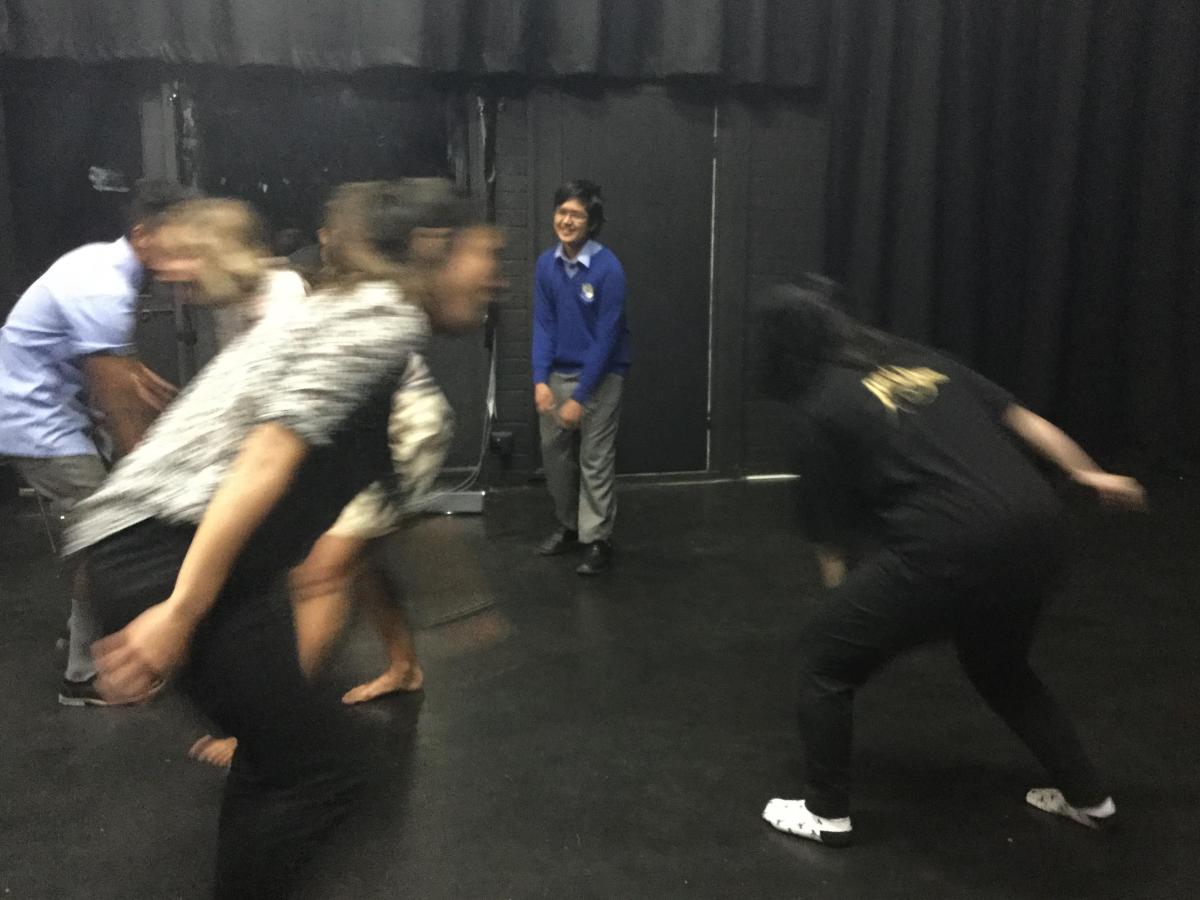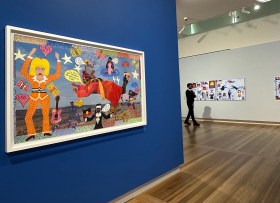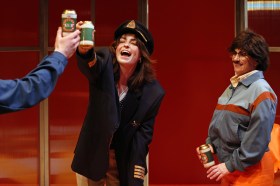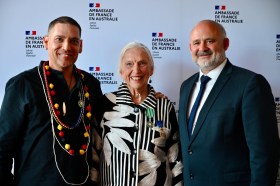Participants in SeaACT
Dandenong is far… as much as I loathe this petty excuse that potential visitors use, I understand it. It is a booming outer Melbourne suburb with incredible infrastructure, arts and culture and a wonderful collection of multicultural eateries.
But it took me two hours, three wrong turns and an accidental drive on a city link freeway to travel from an inner city base to the wonderfully equipped Walker Street Gallery and Arts Centre in the outer south-east.
I didn’t take the train because I’d been warned it was dangerous and, much as I hate the stigmatising, I know that this is a common perspective. When I mentioned to my friends that I’d be working in Dandenong over the coming weeks to create a new theatre project dedicated to new stories and voices, I was met with comments such as ‘All the way there’ and ‘That’s the ghetto’.
I am in Dandenong to counter this very attitude through the SeaACT partnership. I am facilitating a project called People Places and Things: Stories from Way Out Here which aims to give voice to the people who live in these too-often forgotten suburbs.
Ghettos have changed from the legal isolation of minorities in Venice and Nazi Germany to the socio-economically determined clusters found in New York and Paris, Sydney and Melbourne. But they still remain centres of social problems. Ghettoised suburbs usually lack a middle class, and often become spaces of crime, drugs and violence which in turn perpetuates a stigma attached to location and people.
The absence of cultural opportunities is a key contributor to the problem of ghetto suburbs. Being a kid of the western suburbs myself – born in Broadmeadows and brought up in Melton – I am familiar with these circumstances.
Though I grew up to be a writer and playwright, I wasn’t engaged in the performing arts until around the age of twelve or thirteen because it wasn’t available to me. It was only when I moved closer to the CBD as a teenager, that I realised how isolated my community and how few my opportunities had been.
Hearing other voices
New writing and theatre are usually created and consumed by the Australian middle to upper class. The voices of these outer suburbs are often excluded and this exclusion of people, voices and stories within a society makes the hierarchy of class all the more evident, and the division of communities all the more prevalent. The stories and voices that are being excluded are precisely those we need to be hearing and seeing in order to grow new audiences and cultivate a well-rounded civil society.
The more that there is a dominant voice within the arts and culture landscape of Australia, the more that voice will drown out the rest.
Young people living in this environment are instinctively aware of the absence of their perspective in cultural representations.
‘There is a dominant story in this world that is dictated by select people and most of the time I can’t see myself in it. When I see an Asian character in something, not to be token or whatever, but it’s like, yay,’ said Nina Harris, a participant in SeaACT.
Emerging Writers’ Festival producer Hiroki Kobayashi sees the project as ‘deconstructing common narratives’ in order to enable new narratives to emerge.
Crossing geographical and cultural divides
Many factors combine to exclude chunks of society – clusters of funding, ticket prices, the concentration of venues in the inner city and lack of knowledge around opportunities due to poor marketing in outer suburbs and within isolated communities.
Diana Nguyen from the City of Greater Dandenong, project coordinator of the SeaACT project knows from personal experience how difficult it can be to get cultural opportunities in the outer suburbs.
‘Growing up as a teenager in the City of Greater Dandenong in the late 90s, there were no programs available for me to express myself through movement or voice. I remember growing up second generation Australia Vietnamese the emphasis was science, maths and English tutorials but all I wanted to do was meet young people make theatre or attempt to be in a show with other actors. ‘
SeaACT is a direct act of advocacy and creativity dedicated to fostering a partnership between two very different locations in Victoria : the Emerging Writers Festival, Melbourne and the City of Greater Dandenong, in combination with Melbourne Playback Theatre and supported by Creative Victoria and The Copyright Agency.
By utilising the fresh facilities in the City of Greater Dandenong, and working with some of the most exciting young voices in the city, we are aiming to create a piece of theatre that speaks to a wider range of Australians, in the hope that arts and culture can do what it does best, cultivate democracy and inclusivity.
During this project, I have the pleasure and privilege to meet a vibrant and open collection of people from all different walks of life. And what’s even better, I get to hear them, listen to them, watch them, learn them and then write a play that addresses their fears, hopes, experiences and languages. I haven’t worked in this capacity before, and as an emerging/early career playwright, I anticipate I will learn more from the process than anyone else.
‘The long term outcome of this program is that students in the South Eastern suburbs will have their stories captured and performed again and again in schools in Victoria and Australia. Because the stories way out here in Dandenong are pretty special,’ said Nguyen.
This work aims to take the ‘stories from way out here’ and placed them within the psyche of wider audiences so these voices don’t remain on the fringes of society.
No matter where one is from, where they grew up; there are universal human emotions that are experienced by everyone and these are what occupy my mind as a playwright. I aim to get to the heart of these emotions and experiences in storytelling. For me, this is what has the ability to transcend time and space and break through barriers.
And art is nothing, if it is not consistently trying to break through barriers.
If we are truly ever going to become an inclusive society then it is these sorts of initiatives and emotions that we have to use in order to get to the bottom of who we are, where we are, and where we are going.






